Chicopee Woods Wildflower Guide
This handy pictorial guide offers a glimpse of 10 brilliant wildflower species you are likely to find in the 1,440-acre Chicopee Woods Nature Preserve, one of Georgia’s largest protected and most ecologically diverse green spaces. DOWNLOAD Wildflowers of Chicopee Woods Nature Preserve
Chicopee Woods is home to an incredible variety of flora, including several dozen species of native wildflowers that add pops of color to this urban forest every spring. From the warm hues of Flame Azaleas to the cool tones of Bloodroot, wildflower searches are a fan favorite for visitors hiking the trails in Chicopee Woods and strolling around the Elachee Nature Science Center campus.
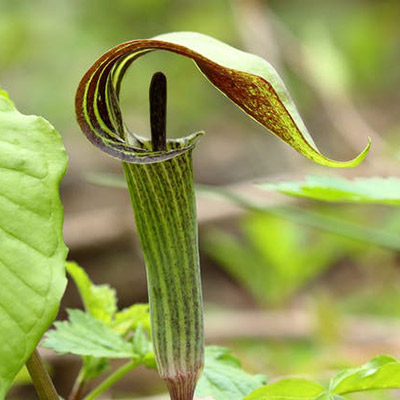
Rising from a 1- to 2-foot stem, you will usually find three glossy leaves and a large, hooded flower that is green with brown stripes. By late summer, these wildflower blooms will give way to a cluster of red berries, which birds and other mammals often eat.
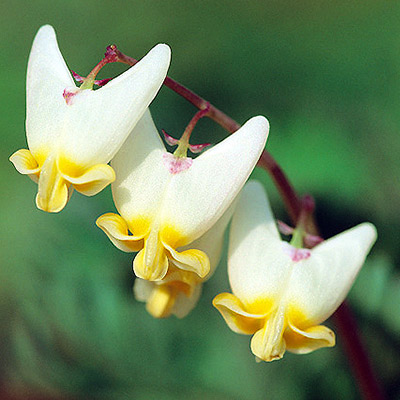
Flowers are yellow, white and fade to pink, and resemble pants hanging upside down. The unique structure of this flower indicates that it has adapted to accommodate bees who separate the inner and outer petals with their legs.
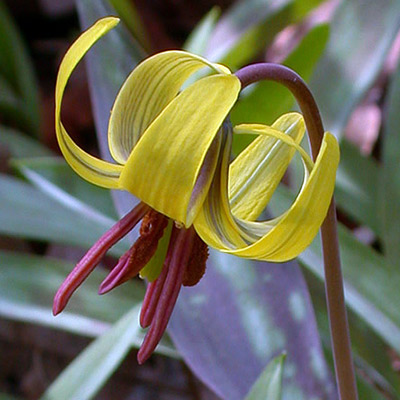
Readily identifiable as a single, nodding flower at the top of a short stalk. Flowers are yellow on the inside with a bronze-colored exterior, with six petals that curve up and away from six brown stamens. This flower goes by an alias, the Dog-Tooth Violet.
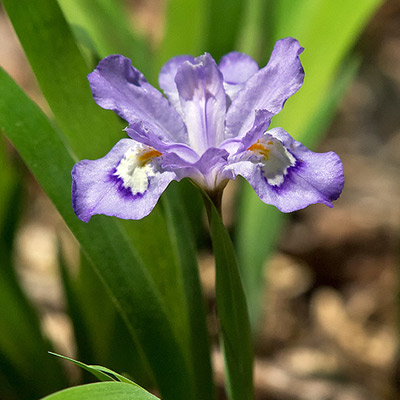
This flower has six violet-colored petals with distinctive white and yellow crested markings in the centers. The North American Cherokee Indians used this flower in herbal medicines. A decoction of the pulverized root was used as salve for ulcers.
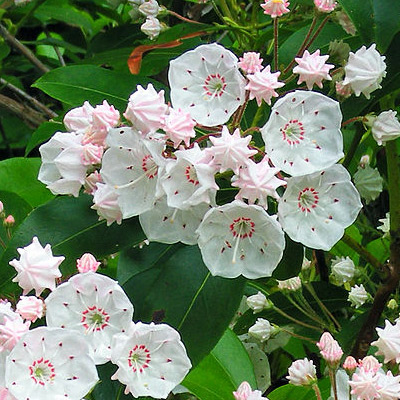
These oval, leathery green leaves and bell-shaped flowers range from a white to pick coloration, with deeper pink spots dotting the blossoms. In some cultures, the Mountain Laurel is associated with ambition, a concept originating with the ancient Greeks who used wreathes of laurel to decorate poets, scholars and other great thinkers.
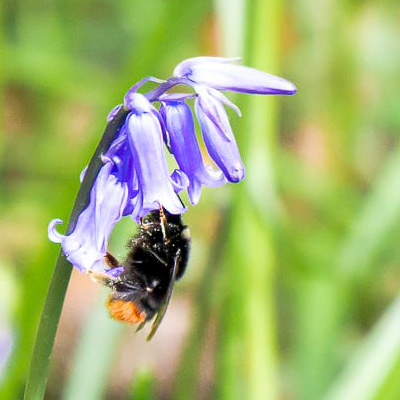
Surrounded by large oval leaves, nodding on stems growing up to 2-feet long, clusters of light pink buds bloom into blue, trumpet-shaped flowers. Bluebells are also known as fairy flowers. According to an old myth, fairies used bluebells to lure and trap unsuspecting passersby, especially children.

This is an upright-branched deciduous shrub that will grow to a 6- to 12-foot height and width. It features large and showy funnel-shaped flowers in clusters of five or more. All parts of the beautiful Flame Azalea are highly poisonous. In fact, its toxicity remains so high that the honey produced by this plant can be fatal to humans.
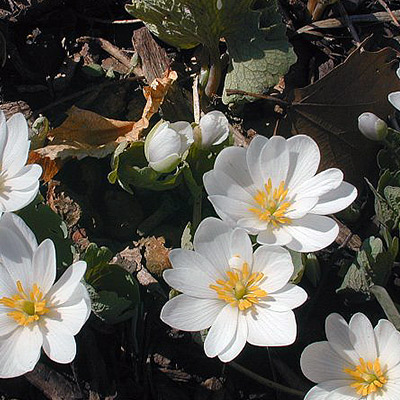
Flowers are 8-petaled and cup-shaped with bright yellow stamens. These blooms are popular with native American tribes who use them for medicinal purposes to treat for a sore throat, congestion and fevers.
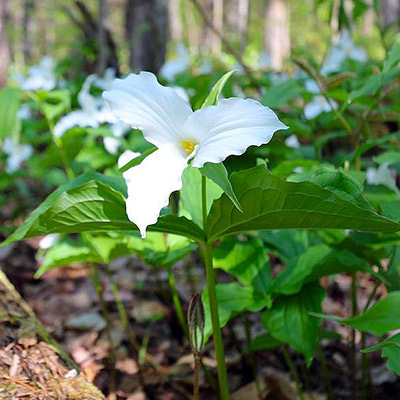
This flower is easily recognizable by its waxy white flower with three petals and three sepals, blooming atop a single stalk arising from a whorls of three deep green leaves. This flower is one of 22 Trillium species found in Georgia, the most in any state!
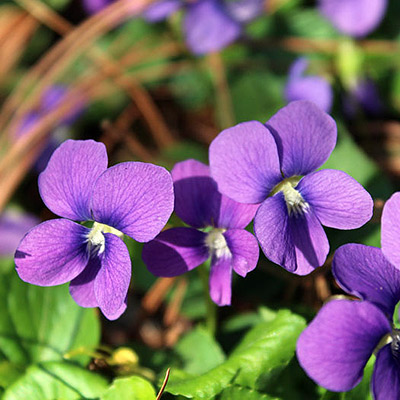
This flower has heart-shaped green leaves and petals that can be blue, violet or lilac. Napoleon Bonaparte made the Blue Violet famous as it was his signature flower.
